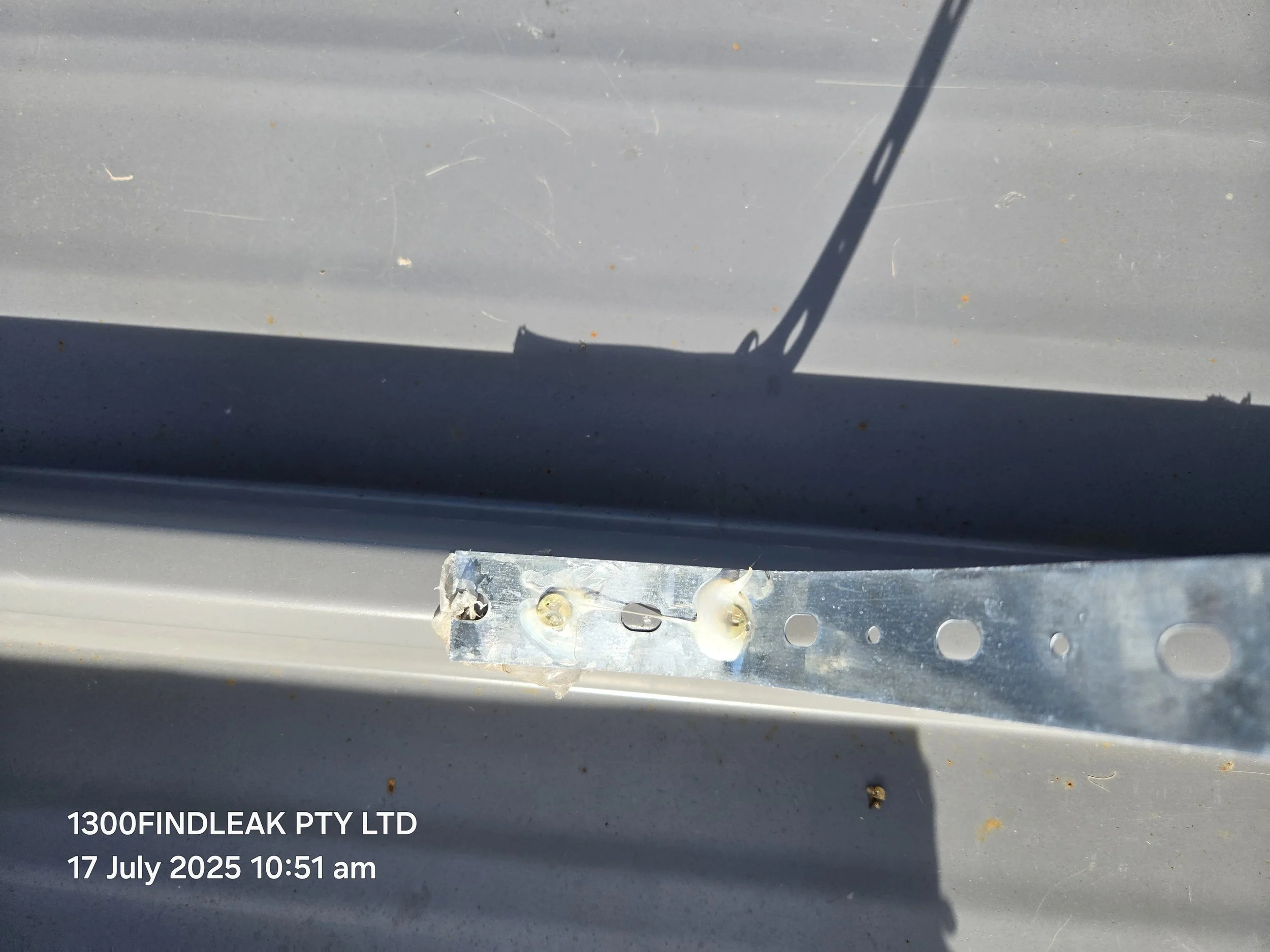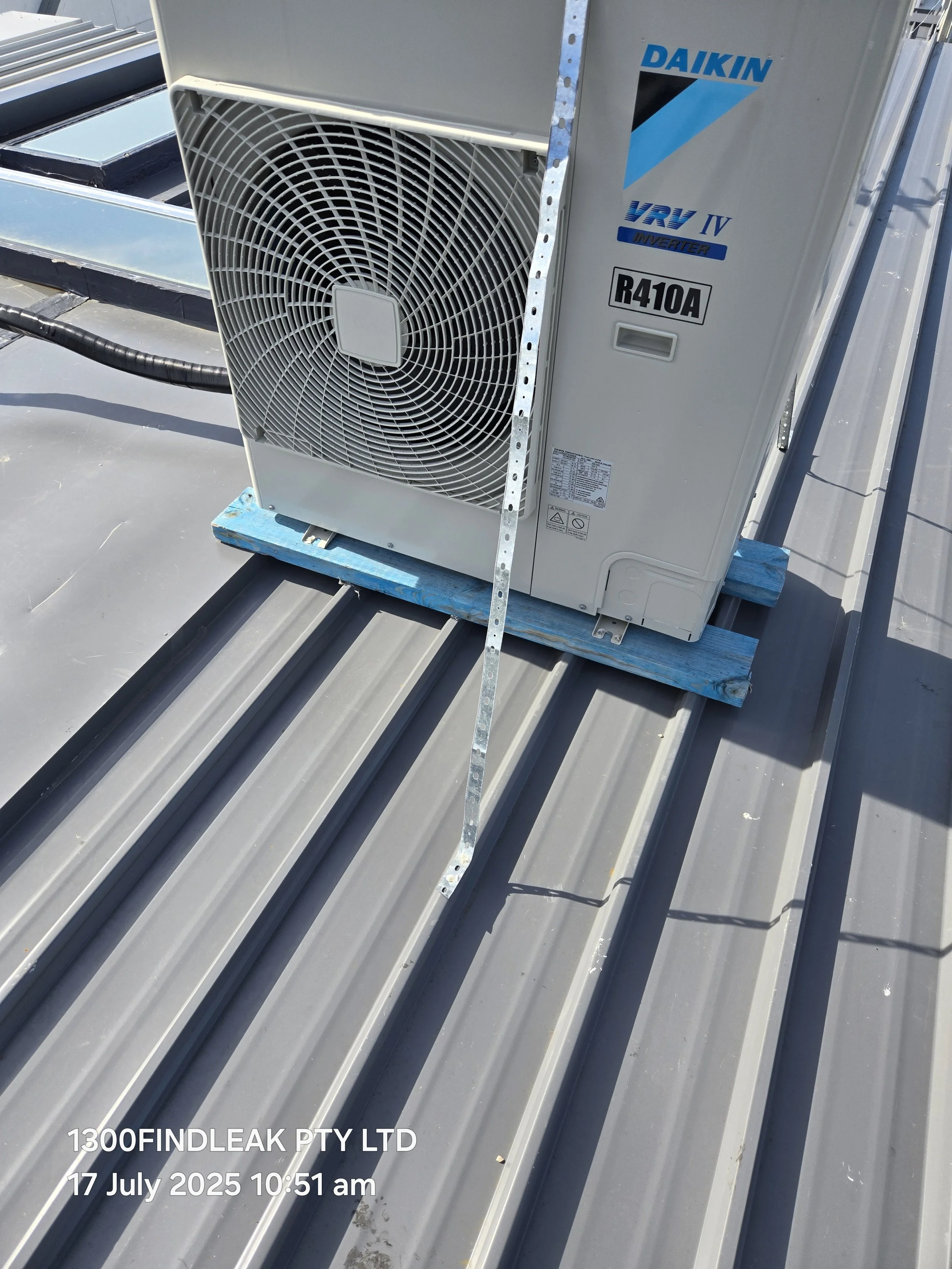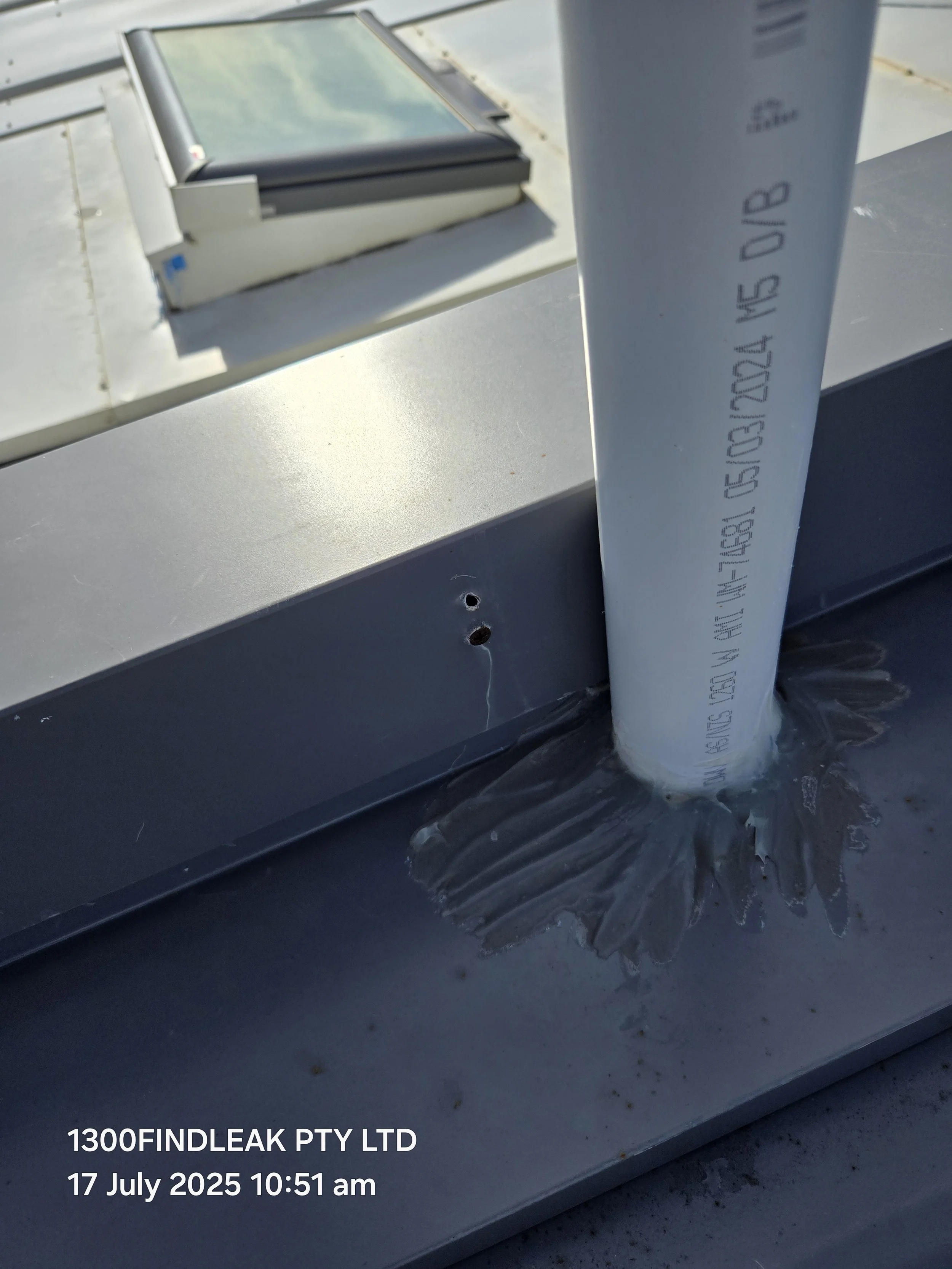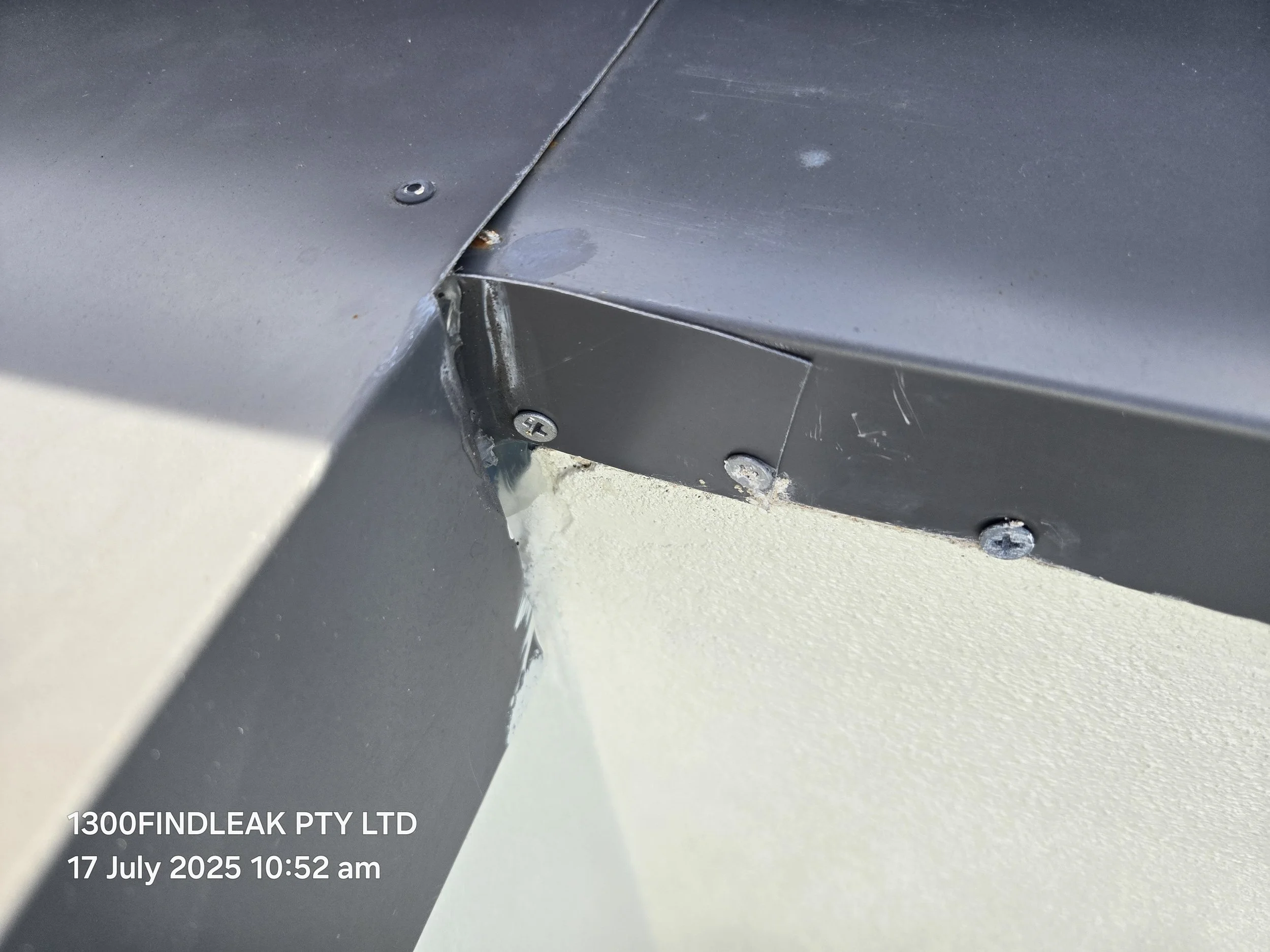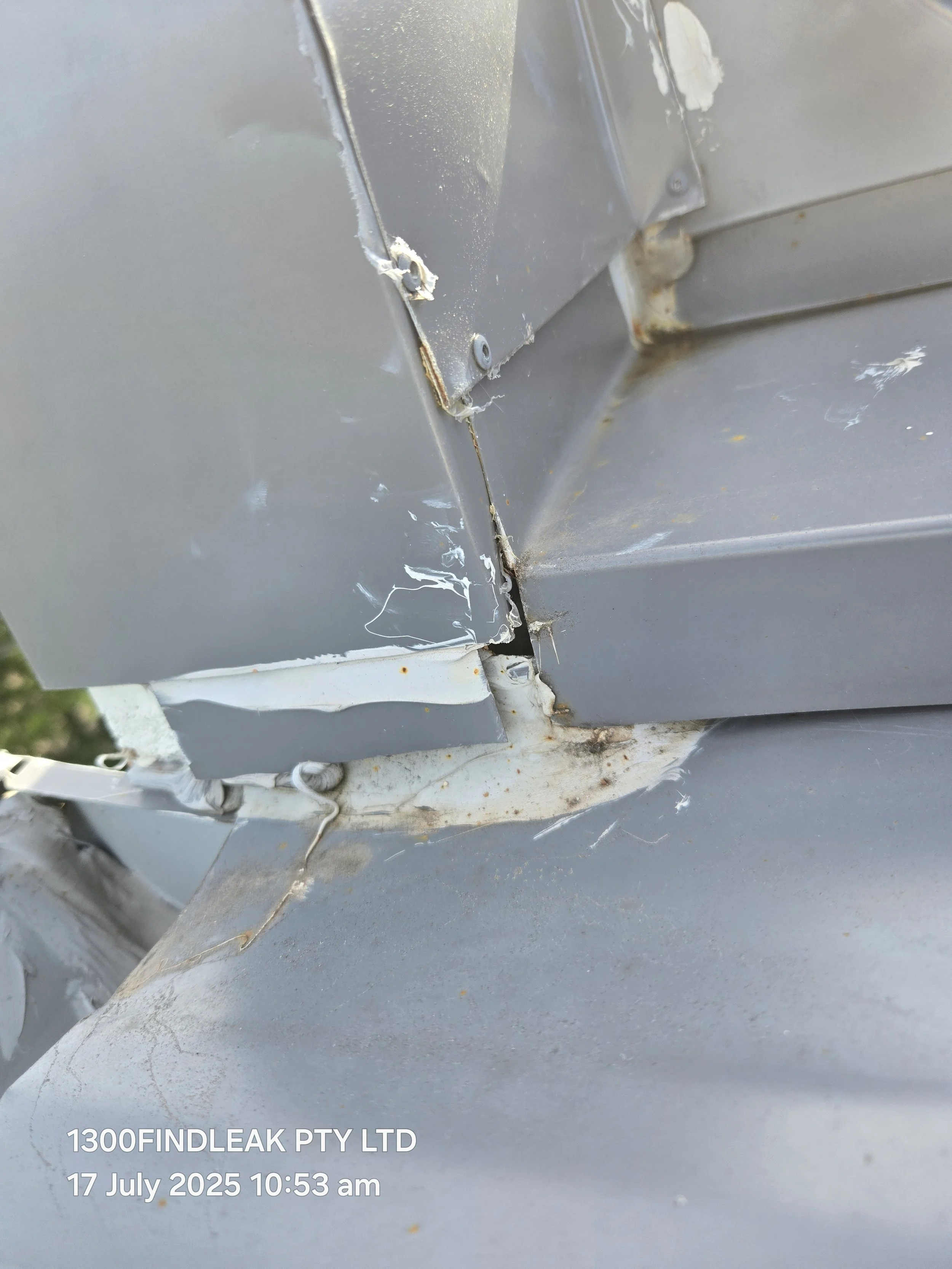Is this the worst ever roof in Sydney?
When you think you've seen it all, you see it again. In the world of leak detection, we encounter a vast spectrum of building issues, from the minor drip to the catastrophic flood. Yet, every so often, a property comes along that truly redefines what's possible in terms of poor construction. Recently, our team at 1300 FINDLEAK carried out an inspection for a young couple in Beaconsfield, Sydney, on what was supposed to be their dream: a stunning, architect-designed, newly built home valued at over $3 million. What we discovered on the roof of this high-value property left us, seasoned professionals, in utter disbelief. It wasn't just a few minor flaws; it was a systemic failure of building standards that raises serious questions about quality control in new construction.
The couple had called us in desperation. Their newly built main house was experiencing severe water ingress every time heavy rain hit. This wasn't a minor damp patch; it was significant water penetration compromising their brand new living spaces. The irony was palpable: a substantial investment in a modern, architect-designed property, yet already plagued by fundamental issues. As we arrived, the builder was still on-site, seemingly attempting remedial work on the very problems we were there to diagnose. Little did we know, the true extent of the catastrophe lay hidden, waiting for us to ascend to the roof.
Ascending to a Nightmare: The Shocking Reality
Stepping onto the roof of the main house, the initial shock was immediate and profound. The term "non-compliant" isn't strong enough to describe what met our eyes; it was a masterclass in how not to build a roof. Every critical detail, every standard practice, seemed to have been overlooked or deliberately ignored.
The first glaring issue was the flashing secured with plaster screws. Yes, you read that correctly – plaster screws, designed for internal drywall, were being used to secure external flashing, a vital waterproofing component. This alone is a monumental failure, guaranteeing water penetration. Beyond this, we found missing returns and laps on crucial flashing elements. Flashing is meant to be meticulously overlapped and turned up or down at edges to create a continuous, watertight barrier. Here, these fundamental details were absent, leaving open pathways for water. Many sections of flashing were also below minimum cover, meaning they simply weren't extending far enough to effectively shed water away from the building envelope.
The list of egregious defects continued to grow. We observed missing apron downturns, which are essential for directing water away from wall junctions. In several areas, exposed bricks were visible where they should have been properly covered and protected by flashing or cladding, creating direct entry points for moisture. The flue (likely for a hot water system or ventilation) was unsecured, not only a leak risk but a potential safety hazard. Crucially, there were no Dek-Tites for penetrations – specialized, flexible flashings designed to seal around pipes, vents, and other roof penetrations. Instead, we saw makeshift attempts at sealing that were clearly failing. Even the A/C unit was not properly braced and secured, risking damage to the roof and creating further vulnerabilities for water ingress. And as a final, desperate attempt to cover up these widespread failures, butyl tape was plastered everywhere – haphazardly applied to seal pan laps and skylights. Butyl tape is a temporary fix at best, and its widespread, unsystematic use indicated a profound lack of understanding of proper waterproofing principles. This entire scenario directly explained the severe water ingress the living spaces below were experiencing.
The Root Cause: Why Are Standards Falling Short?
This Beaconsfield case study, while extreme, is unfortunately not an isolated incident. It highlights a worrying trend in the construction industry where fundamental building standards are consistently falling short. Why does this happen, especially on high-value, new builds?
Rushed Construction Schedules: Pressure to complete projects quickly often leads to shortcuts, particularly in hidden areas like flashing and waterproofing, where defects may not be immediately visible.
Lack of Skilled Tradespeople: A shortage of experienced and properly trained roof plumbers and waterproofers means critical tasks are sometimes undertaken by unqualified individuals or those who cut corners.
Cost-Cutting Measures: In a competitive market, some builders may opt for cheaper materials or less time-consuming (and often less effective) installation methods to save on costs, compromising long-term integrity.
Insufficient Oversight and Inspections: Regulatory inspections may not always catch every hidden defect, and internal quality control by builders can be inadequate, allowing non-compliant work to go unnoticed until leaks manifest.
Complexity of Modern Designs: Architect-designed homes often feature complex rooflines, multiple junctions, and varied materials, which require an even higher level of expertise and meticulous attention to detail during construction. When this expertise is lacking, these complex designs become highly vulnerable to water ingress.
The consequences for homeowners are devastating. Beyond the immediate water damage and the stress of dealing with a faulty new build, there are significant financial burdens. Repairs for systemic waterproofing failures can be incredibly expensive, often running into tens or even hundreds of thousands of dollars. There are also potential health risks from mould growth, diminished property value, and often, protracted disputes with builders and insurance companies.
Don't Let Your Dream Home Become a Nightmare
The Beaconsfield case is a stark reminder that a new, expensive, or architect-designed home is not automatically immune to severe building defects. Water leaks, particularly those caused by underlying construction flaws, are complex and require expert diagnosis. Relying on superficial fixes or unqualified trades can lead to recurring problems and escalating damage, turning a dream home into a persistent nightmare.
At 1300 FINDLEAK, we pride ourselves on our non-invasive, evidence-based approach to leak detection. Using advanced thermal imaging, moisture surveys, and targeted water testing, we pinpoint the exact source of water ingress, even when it's hidden behind walls or under floors, or when the defects are as egregious as those found in Beaconsfield. We provide comprehensive reports, identifying defects, compliance issues, and clear repair recommendations that address the root cause, not just the symptoms.
If you're experiencing persistent leaks, water damage, mould, or dampness in your Sydney property, especially a new build, don't wait for the problem to worsen. Early and accurate detection is key to preventing costly repairs and safeguarding your investment. Trust Australia's leading leak detection specialists. Contact 1300 FINDLEAK today – we find leaks plumbers can't!






